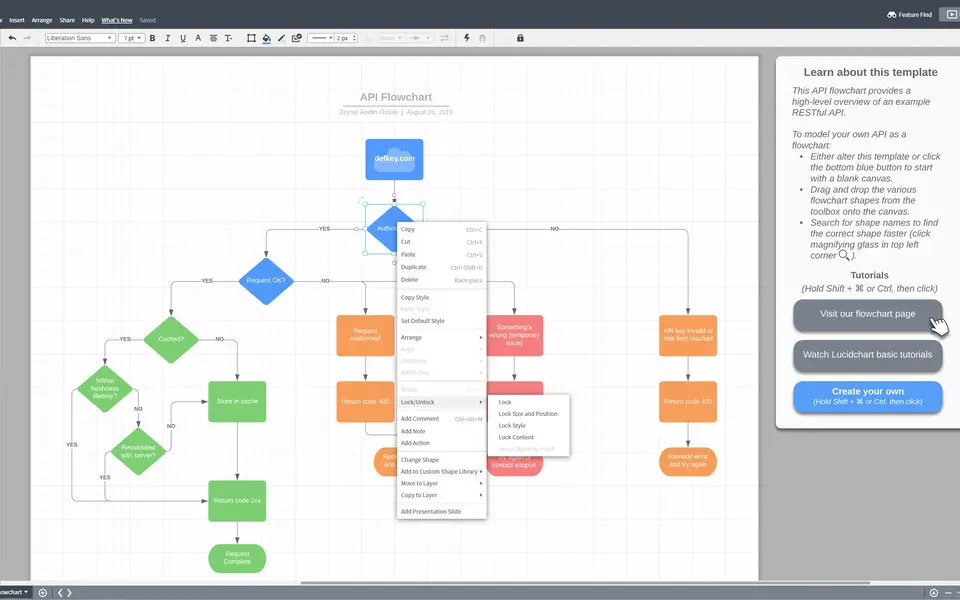
Users with the Default Access role are excluded from provisioning and will be marked as not effectively entitled in the provisioning logs. When assigning users and groups to Lucidchart, you must select a role other than Default Access. If you choose to scope who will be provisioned based solely on attributes of the user or group, you can use a scoping filter as described here. If you choose to scope who will be provisioned to your app based on assignment, you can use the following steps to assign users and groups to the application. The Azure AD provisioning service allows you to scope who will be provisioned based on assignment to the application and or based on attributes of the user / group. Define who will be in scope for provisioning Learn more about adding an application from the gallery here. However it is recommended that you create a separate app when testing out the integration initially. If you have previously setup Lucidchart for SSO you can use the same application. Add Lucidchart from the Azure AD application galleryĪdd Lucidchart from the Azure AD application gallery to start managing provisioning to Lucidchart. This value will be entered in the Secret Token * field in the Provisioning tab of your LucidChart application in the Azure portal. Scroll down to see the Bearer token and Lucidchart Base URL. Configure Lucidchart to support provisioning with Azure AD Determine what data to map between Azure AD and Lucidchart.Determine who will be in scope for provisioning.Learn about how the provisioning service works.A user account in LucidChart with Admin permissions.A LucidChart tenant with the Enterprise plan or better enabled.Application Administrator, Cloud Application administrator, Application Owner, or Global Administrator). A user account in Azure AD with permission to configure provisioning (e.g.The scenario outlined in this tutorial assumes that you already have the following prerequisites: Single sign-on to Lucidchart (recommended).Provision groups and group memberships in Lucidchart.Keep user attributes synchronized between Azure AD and Lucidchart.Remove users in Lucidchart when they do not require access anymore.Some SCIM providers’ documentation links are listed below:Ĭopy and paste the SCIM bearer token into SaaS Management. Refer to your SCIM provider’s documentation for details. This SCIM bearer token is used to authenticate your requests.Īfter generating a SCIM bearer token, turn off the auto-upgrade setting to prevent unwanted licensing during the configuration process.Īdd the SCIM bearer token to your SCIM provider. Generate a SCIM bearer token by navigating to Team, clicking App Integration, and then clicking SCIM. Note: To generate a token you must be a team admin. If this setting is not enabled, you will be unable to generate a SCIM bearer token to configure SCIM.

Contact your Lucidchart Customer Success Manager to enable SCIM for your account.Įnsure that auto-upgrade is enabled in your Licensing settings. This step requires the role of Account Owner or Billing Admin.Įnsure SCIM has been enabled for your account. To integrate Lucidchart with SaaS Management: 1.Įnable automatic team upgrades by navigating to Team and clicking Licensing.

To integrate Lucidchart with SaaS Management, perform the following.
#Lucidchart table license
For details, refer to Entering license details for license differentiation.

The total spend for the billable Lucidchart accounts displayed in the Lucidchart App Details screen is based on the Lucidchart license cost details entered in the License Details tab. To view this license differentiation feature, navigate to the Activity tab of the Lucidchart App Details screen where you can filter and export the Lucidchart license types. SaaS Management offers a license differentiation feature that allows you to view users by license type. Lucidchart License Types Displayed in the Activity Tab The following table lists the Lucidchart license types displayed in the Activity tab. Lucidchart offers two types of licenses - View-Only vs Can-Edit. Note:The information stored is subject to change as enhancements are made to the product. See License Types and License Differentiation. The following table describes the available integration tasks and stored data. Integrating Lucidchart with SaaS Management Lucidchart is a web-based proprietary platform that is used to allow users to collaborate on drawing, revising, and sharing charts and diagrams.


 0 kommentar(er)
0 kommentar(er)
